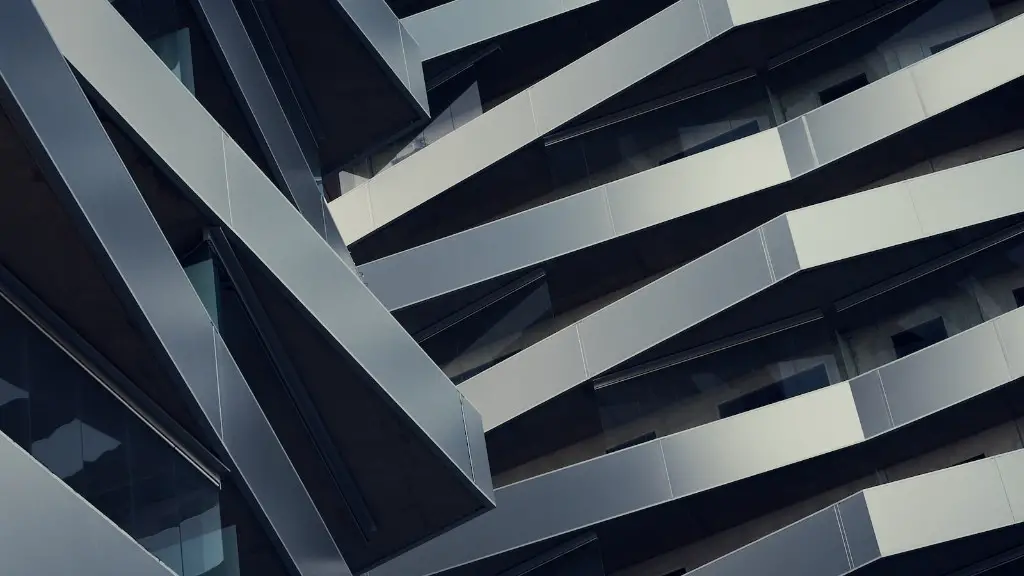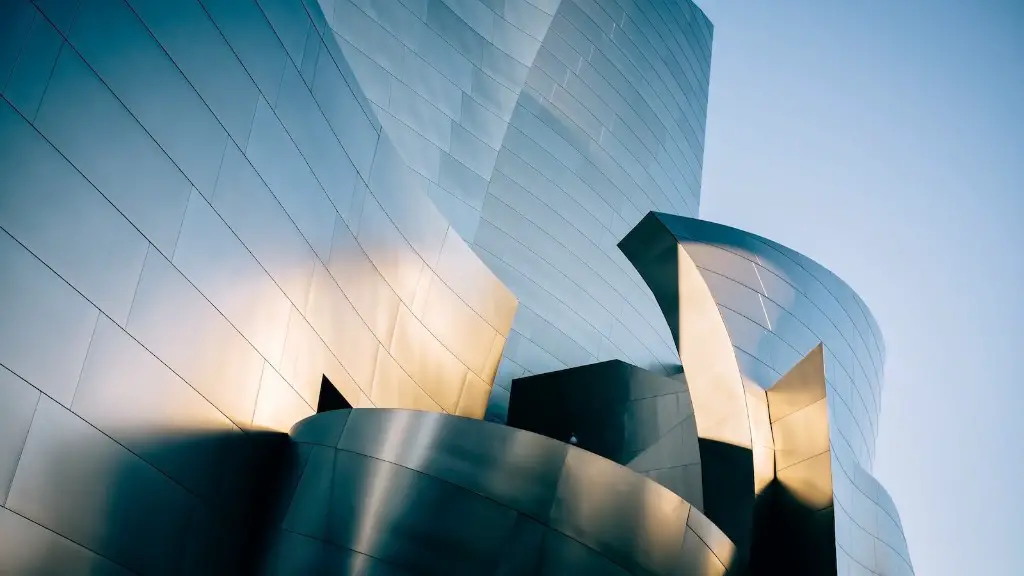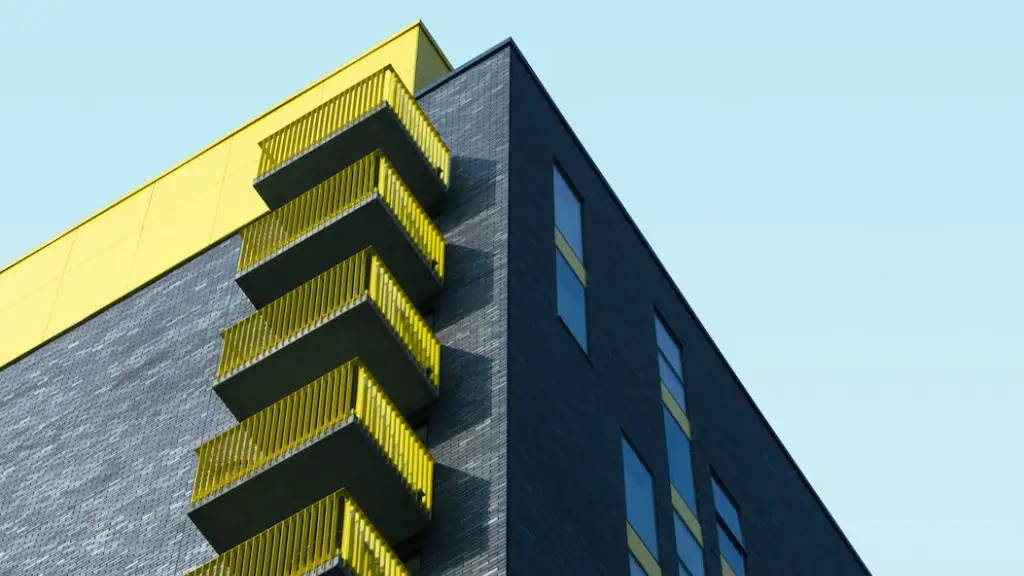Introduction
Modern architecture style is an umbrella term used to refer to the many architectural styles that flourished during the late 19th and early 20th centuries. The term describes the style of architecture which emerged in the wake of the Industrial Revolution, a period in which new materials, technologies and construction methods had a significant impact on the built environment. In the past, most styles of architecture conformed to traditional rules and regulations. Modern architecture, however, rejected traditional concepts of beauty and instead aimed to create structures that challenged established aesthetic conventions.
History of Modern Architecture
Modern architecture had its origins in the 19th century, when a shift away from the classical structure of traditional buildings was first noticed. The new style inspired a wave of experimentation with materials and techniques that resulted in a range of unusual and sometimes controversial designs. The seminal event of the period was the 1889 Eiffel Tower in Paris, an iconic structure that remains a major tourist attraction today.
It wasn’t until the early 20th century that modern architecture as we know it today began to take shape. During this period, some of the most influential architects in the world, such as Le Corbusier, Walter Gropius, Ludwig Mies van der Rohe, and Frank Lloyd Wright, began to experiment and develop the principles of modern design. These principles included the use of new materials such as iron and steel, the adoption of the machine-age aesthetic, and the concept of “form following function”—the idea that a building’s design should be driven by its intended purpose.
Characteristics of Modern Architecture
Modern architecture is characterized by a combination of simple, geometric forms and functionality. Many modern buildings feature a horizontal orientation that takes advantage of large, open spaces. Floor-to-ceiling windows are often used to bring natural light into the interior. The rejection of traditional ornamentation and decoration in favor of clean lines and unadorned surfaces is another important element of the modern style.
Common materials used in modern architecture include concrete, steel, glass, and stucco. The use of flat roofs and large cantilevered extensions also plays a role in creating expansive exteriors, while inside, open-plan interiors are favored. Color is used sparingly and serves to highlight certain elements of the architecture, rather than to decorate the entire structure.
Benefits of Modern Architecture
Modern architecture has many advantages over its traditional predecessors. One of the most important benefits is the ability to make the most of available space. By using functional designs and open-plan layouts, modern buildings can create large, airy interiors that take advantage of natural light and ventilation. Modern architecture also puts an emphasis on energy efficiency, with materials and building systems designed to reduce energy consumption.
Famous Examples of Modern Architecture
There are many famous examples of modern architecture around the world. The Empire State Building in New York City is a well-known example, with its distinctive Art Deco design. Other iconic structures include the 60-story Pirelli Tower in Milan, the German Parliament Building in Berlin, the Sydney Opera House in Australia, the Metropolitan Museum of Art in New York City, and the Sydney Harbour Bridge in Australia.
Criticisms of Modern Architecture
Despite the popularity of modern architecture, it has also been the subject of much criticism. Critics argue that the style lacks diversity, with many designs appearing too similar and bland. There is also concern that some modern buildings ignore the historical and cultural context of their surroundings, appearing out of place and hindering visual cohesion.
Conclusion of the Topic
Modern architecture has moved away from traditional design conventions in order to create structures that challenge aesthetic conventions and push the boundaries of architectural design. Its simple forms and lack of ornamentation serve an important role in creating comfortable living environments, while pushing the boundaries of available materials and techniques to create energy-efficient structures. The style has been subject to controversy, yet there is no denying its influence on the built environment and its ability to continually inspire and surprise.
Modern Architecture and the Environment
Modern architecture is increasingly incorporating sustainable design elements into its construction. The use of renewable materials, such as bamboo and timber, and the orientation of buildings to maximize natural light are common features of modern green building practices. By utilizing innovative materials and technologies, modern architects are pushing the boundaries of sustainable building.
The Impact of Digital Technology on Modern Architecture
The rise of digital technology is having a significant impact on modern architecture. For example, advanced computer-aided design technologies allow architects to quickly create complex and detailed three-dimensional designs. Similarly, 3D printing technologies are allowing architects to experiment in building construction by manufacturing components of structures on-site.
Modernism, Postmodernism and Deconstructivism
Modernism is the broad school of thought which modern architecture is a part of. It emphasizes rationality, simplicity, and functionality. Postmodernism is a reaction to the strict rules and regulations of modernism, allowing for playful designs, decorative details, and colorful palettes. Deconstructivism goes one step further, advocating for radical reinterpretations of traditional architectural forms.
The Legacy and Future of Modern Architecture
Modern architecture has influenced the world and left an indelible mark on the built environment. Its minimalism and functionality have become a staple of contemporary urban design, and its spirit of experimentation continues to inspire and challenge succeeding generations of architects. As materials and technologies continue to evolve, modern architecture will evolve too, pushing the boundaries of design and creating an even more exciting architectural landscape.


